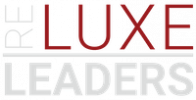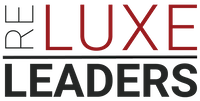Understanding and leveraging luxury real estate innovation metrics is essential for elite teams aiming to maintain competitive advantage and drive sustainable growth. Innovation isn’t just about adopting new technology; it requires measurable impact across operational efficiency, client engagement, and profitability. This article breaks down actionable frameworks and KPIs to help luxury real estate leaders quantify the success of their innovation initiatives.
Defining Innovation Success Beyond Revenue
While revenue uplift is a critical indicator, true innovation success incorporates diverse metrics including team productivity, client satisfaction, technology adoption rates, and market positioning. Leading teams evaluate how innovations streamline workflows, shorten sales cycles, and enhance buyer experiences.
Tracking client feedback and referral increases provide qualitative validation, complementing quantitative benchmarks.
Frameworks for Implementing Innovation Measurement Systems
Elite luxury teams deploy comprehensive measurement systems that begin with goal alignment—defining specific innovation objectives tailored to their market segment and team structure. Next, they select KPIs that directly relate to those goals, such as lead-to-close conversion improvements, average deal size growth, or reductions in transaction processing time.
Regular data collection and real-time dashboards enable continuous monitoring and agile course correction.
Quantitative Case Studies Demonstrating Innovation ROI
One top luxury brokerage integrated AI-driven lead scoring and automated marketing workflows, resulting in a 25% faster lead follow-up and a 30% increase in closed transactions year-over-year. Such direct correlations between innovation metrics and business outcomes empower data-driven decisions.
Tailored KPIs for Luxury Market Segments and Team Sizes
Measured KPIs vary by team composition and market. Smaller boutique teams may prioritize client retention rates and personalized marketing impact, while larger teams focus on agent productivity KPIs and cross-channel attribution analytics.
Integrating Innovation Metrics Into Talent Management
Embedding innovation performance into recruiting and retention frameworks motivates agents to embrace new technologies and processes. Offering ongoing training and recognizing innovation-driven achievements sustain adoption momentum.
Technology Tools and Automation for Real-Time Tracking
Luxurypresence platforms, custom dashboards, and AI-enabled CRMs provide live views of innovation impact. Automation reduces data errors and facilitates comprehensive analysis.
Avoiding Vanity Metrics: Focused Measurement for Real Results
Elite teams avoid superficial metrics such as social media likes or open rates. They focus on actionable indicators tied to revenue, client health, and operational efficiency, ensuring every measurement informs strategic decisions.
For further expert insights, explore technology trends in luxury real estate on the Inman Technology section, industry analysis by McKinsey & Company, and market strategies from The Real Deal.
Conclusion
Luxury real estate innovation metrics provide a critical compass for elite teams seeking measurable growth. By integrating customized frameworks, targeted KPIs, and leading-edge technology, luxury brokers position themselves to capitalize on market shifts and deliver differentiated client experiences.
Ready to measure and magnify your innovation success? Book a confidential strategy call with RE Luxe Leaders™ and unlock tailored, actionable guidance to elevate your luxury team’s innovation impact.






